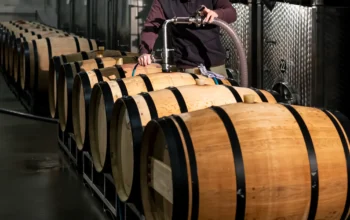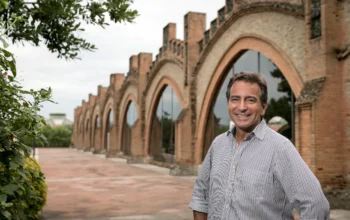WINELIFE writes about wine, that much is obvious. But sometimes the setting is so interesting that we can't ignore it. Take Béziers in Languedoc, one of France's oldest cities and the birthplace of Domaine Preignes le Vieux. TEXT CHARLOTTE VAN ZUMMEREN
In Languedoc, viticulture goes back a long way and so does Béziers, the hometown of Domaine Preignes le Vieux which we will talk about later. Béziers is the hometown of Pierre-Paul Riquet, the designer of the Canal du Midi. Béziers is on the Via Domitia, the road built by the Romans from Rome to Spain. And, of course, at the heart of Béziers: the Les Allées Paul-Riquet, a beautiful promenade of plane trees that runs past shops and café terraces. The adjacent Plateau des Poètes is a lovely park for relaxation and recreation. And Béziers' history dates back to Roman times. Even then, the terroir was suitable for viticulture and the Romans did not let that go unused. Within a short time, amphorae of white wine went to Rome.
Cathar
In the 12th and 13th centuries, the Cathars, a religious movement, were big in Languedoc. And not only in Carcassonne, Béziers was also one of the Cathars' strongholds, much to the annoyance of the Catholic Church. Cathars were, in fact, heretics in the eyes of Catholics. The inhabitants of Béziers supported the Cathars and this led to a large-scale massacre of the population in which no one was spared - including the Catholics in Béziers, that is. That was a black day for Béziers.
Times have thankfully changed, Béziers is now a hearty old town. The 14th-century Saint-Nazaire cathedral is a tourist highlight in the old town, in the centre which is also historic and cosy.
Locks
Another unusual phenomenon near Béziers are the locks of Fonserannes. In French, it sounds even nicer: Les Écluses de Fonserannes. They are part of the Canal du Midi, a 312-metre waterway that allows some 8,000 ships and boats to move over a 25-metre height difference every year. In 1976, the Canal du Midi was inscribed on UNESCO's World Heritage List, giving a huge boost to visitor numbers. Built between 1667 and 1681 under Louis the 14th, the canal was called the Royal Canal until the French Revolution - and then, of course, no longer. The canal stretches for 240 kilometres. The 20- to 24-metre-wide canal is on average 2 metres deep and has 69 locks. Quite a feat, such a project, especially at the time. The Fonserannes locks include eight lock chambers and nine locks. The locks have been a Monument Historique since 1996 and attract more than 300 thousand visitors a year. Les Écluses de Fonserannes are the third largest tourist attraction after Carcassonne and the Pont du Gard in Languedoc-Roussillon.
Don't want to miss a single edition? Subscribe then subscribe to Winelife magazine now!




